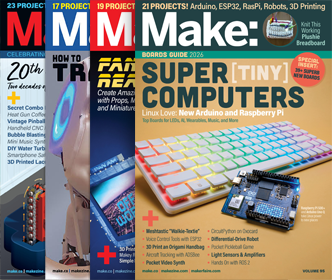ScanJet Music – Play music with your scanner
 This scanner can actually play music, nice hack – “That’s right. The HP ScanJet 4c’s SCL (Scanner Control Language) command set includes an unofficial PLAY TUNE command. I stumbled across this after reading an article on the ScanJet 4c in the feb. 1997 issue of HP Journal (see the sidebar Sing to Me). The PLAY TUNE command basically varies the stepping rate of the scanner motor to produce audible frequencies. All it needs is a series of note frequencies and durations previously written to its SCSI buffer. ” [via] Link.
This scanner can actually play music, nice hack – “That’s right. The HP ScanJet 4c’s SCL (Scanner Control Language) command set includes an unofficial PLAY TUNE command. I stumbled across this after reading an article on the ScanJet 4c in the feb. 1997 issue of HP Journal (see the sidebar Sing to Me). The PLAY TUNE command basically varies the stepping rate of the scanner motor to produce audible frequencies. All it needs is a series of note frequencies and durations previously written to its SCSI buffer. ” [via] Link.




 Peter writes with the results from the call for
Peter writes with the results from the call for 
 Peter writes “Gijs Geiskes has posted his latest monster creation: a sequencer that syncs to Game Boys running LSDJ, and controls other goodies like Walkmans, Stylophone keyboards, and more. He’s posted full circuit diagrams so you build on your own. (See his
Peter writes “Gijs Geiskes has posted his latest monster creation: a sequencer that syncs to Game Boys running LSDJ, and controls other goodies like Walkmans, Stylophone keyboards, and more. He’s posted full circuit diagrams so you build on your own. (See his 
 Video of a wireless MIDI glove…“haduz is a 24 year-old computer engineering graduate and musician from Bologna, Italy. He’s developed the 3DID wireless MIDI glove, with 5 bend sensors (I’m guessing that’s fingers), 3 gyroscopes, 3 accelerometers and 18 hours of battery life. As he says: “The most exciting thing is that the cost of the actual prototype (the glove shown in the video) together with the wireless receiver is about 150 euros.” Thanks Tom!
Video of a wireless MIDI glove…“haduz is a 24 year-old computer engineering graduate and musician from Bologna, Italy. He’s developed the 3DID wireless MIDI glove, with 5 bend sensors (I’m guessing that’s fingers), 3 gyroscopes, 3 accelerometers and 18 hours of battery life. As he says: “The most exciting thing is that the cost of the actual prototype (the glove shown in the video) together with the wireless receiver is about 150 euros.” Thanks Tom! 
 There’s something appealing to running Linux on a $8000 Korg… MFenkner writes “Knoppix is a CD-based Linux distribution. I figured I’d give it a try to see if the Oasys would boot it, and sure enough it did! It even recognized a USB keyboard, USB mouse, and USB Ethernet adapter! The only problem is it doesn’t recognize the display correctly by default, so it would require some customizing of the Knoppix CD. As it is, the screen is off-center and “blurry” due to the wrong resolution.” [
There’s something appealing to running Linux on a $8000 Korg… MFenkner writes “Knoppix is a CD-based Linux distribution. I figured I’d give it a try to see if the Oasys would boot it, and sure enough it did! It even recognized a USB keyboard, USB mouse, and USB Ethernet adapter! The only problem is it doesn’t recognize the display correctly by default, so it would require some customizing of the Knoppix CD. As it is, the screen is off-center and “blurry” due to the wrong resolution.” [
 “Mark McKeown loved the classic RCA Theremin so much that he built one to spec from scratch, down to the vintage power supply, coils, and cabinet. With authentic tubes and other details, this near-perfect replica can reproduce the instrument’s sound far better than a cheap kit. Mark includes links to resources for specs and supplies if you want to try it yourself.” [
“Mark McKeown loved the classic RCA Theremin so much that he built one to spec from scratch, down to the vintage power supply, coils, and cabinet. With authentic tubes and other details, this near-perfect replica can reproduce the instrument’s sound far better than a cheap kit. Mark includes links to resources for specs and supplies if you want to try it yourself.” [
 MAKE photo pool member Shufflehacks writes “I built my own radio-transmitter for my Shuffle, I nicknamed it “iMouse”. It works quite easy, there is a power switch on the bottom to turn it on. Just press play on the Shuffle and tune your radio to the right frequency. The range is about 100 to 150 meters.(500 feet) Now I can enjoy my Shuffle on my car stereo.”
MAKE photo pool member Shufflehacks writes “I built my own radio-transmitter for my Shuffle, I nicknamed it “iMouse”. It works quite easy, there is a power switch on the bottom to turn it on. Just press play on the Shuffle and tune your radio to the right frequency. The range is about 100 to 150 meters.(500 feet) Now I can enjoy my Shuffle on my car stereo.” 